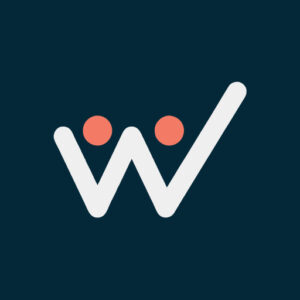Introduction
Leadership isn’t something you build overnight. It takes foresight, commitment, and the right support at the right time. But in many organizations, leadership development still happens reactively—only when there’s a vacancy to fill or a crisis to solve. That delay often leaves teams scrambling, high-potential employees overlooked, and succession plans collecting dust.
Today’s workforce expects more. They want to grow into leadership roles with purpose and preparation. That’s where leadership pipeline coaching comes in.
Leadership coaching, when powered by data and driven by strategy, helps organizations develop talent well before there’s a formal need. When engagement data, wellness participation, and recognition activity are part of the picture, coaching becomes smarter, more targeted, and far more effective. The result? A stronger, more agile leadership bench that’s ready for both the expected and the unexpected.
The Leadership Gap: Why Succession Planning Falls Short
Most companies recognize the importance of succession planning—but few execute it well. The most common challenge? A lack of structure and continuity. Succession planning often becomes a static exercise—a document updated once a year, disconnected from daily operations and team dynamics.
Meanwhile, high-potential employees are left to guess whether there’s room for them to grow. They may excel in their current roles but receive little feedback or guidance on how to prepare for what’s next. Without clear pathways or support, even your best employees might assume their next opportunity lies elsewhere.
On the organizational side, the absence of a ready bench leads to:
- Delayed promotions and hiring gaps
- Poor leadership transitions that disrupt momentum
- Over-reliance on external candidates unfamiliar with company culture
It’s not just an internal problem—it’s a widespread one. According to the DDI Global Leadership Forecast, only 11% of organizations report having a strong bench of leadership talent. That means most companies are not prepared to fill critical leadership roles quickly or effectively when the need arises.
Succession planning can’t be treated as an annual checklist item. It needs to be continuous, flexible, and people-centered. That’s where coaching comes in—not as a replacement for succession plans, but as the engine that powers them.
How Leadership Pipeline Coaching Builds Bench Strength
Leadership pipeline coaching is proactive, intentional, and deeply personal. Rather than waiting until a leadership gap appears, it equips employees with the mindset, skills, and confidence to lead well before they step into new roles.
For emerging leaders, coaching offers:
- A safe space to explore leadership identity
- Guidance on balancing influence, authority, and vulnerability
- Support in managing upward and across, not just down
For the organization, it creates a ripple effect—more capable managers, more engaged teams, and a culture of ongoing growth.
Leadership coaching also helps surface potential that might otherwise go unnoticed. Not every future leader is outspoken or already in a management role. Some are quiet high-performers who simply haven’t had the opportunity or support to stretch. Coaching brings them into focus.
It also deepens commitment. When people feel the organization is investing in them beyond their current role, they’re more likely to stay, grow, and contribute meaningfully over the long term.
Using Data to Guide Coaching—Not Just Gut Feeling
Traditional leadership development often relies on subjective assessments. Leaders are selected based on manager feedback, personality fit, or tenure. While intuition has its place, it’s not always accurate—and it doesn’t scale.
That’s why organizations are increasingly turning to real-time data to inform coaching and development decisions. When insights from engagement surveys, recognition trends, and wellness participation are woven into coaching strategies, the results become more precise and impactful.
Instead of asking, “Who seems ready to lead?” companies can ask:
- Who’s demonstrating influence through peer recognition?
- Which teams are struggling with cohesion and need stronger leadership?
- Who’s at risk of burnout and may benefit from coaching before stepping into a new role?
This shift from reactive to data-informed coaching changes everything.
Pinpointing Leadership Development Needs
It’s easy to miss signs of disengagement or stagnation—especially on high-functioning teams. But data tells a deeper story.
For example, a team with strong performance but low recognition activity or low participation in wellness programs may signal a leadership challenge. Maybe the manager isn’t communicating expectations clearly. Perhaps morale is slipping quietly. Or, maybe a rising star is feeling overlooked.
By tracking trends over time, organizations can uncover patterns and identify exactly where coaching is needed. This allows them to:
- Focus coaching efforts on under-supported managers
- Support teams with declining engagement before turnover begins
- Offer development opportunities to employees who are showing early signs of readiness
Leadership pipeline coaching becomes a precision tool—not a general intervention.
Enhancing Team Dynamics with Coaching Insights
Leadership isn’t just about individual performance. It’s about team dynamics. A great leader brings out the best in others—and poor leadership can undermine even the strongest teams.
That’s why data about team engagement, wellness challenge participation, and collaboration can be so valuable. It reveals what’s happening beneath the surface. Coaching can then be used to help leaders:
- Strengthen interpersonal communication
- Recognize the early signs of disengagement or conflict
- Learn how to lead diverse, hybrid, or cross-functional teams
For example, if one team consistently underperforms in company-wide wellness or culture initiatives, it may not be about motivation—it may be about leadership. Coaching can help that manager re-engage their team in ways that are relevant and sustainable.
Proactive Coaching Prevents Bigger Problems Later
In most workplaces, interventions happen too late. By the time disengagement is visible, burnout is widespread, or turnover begins, the damage is already done.
A proactive approach changes the timeline. With continuous data coming in from multiple touchpoints—surveys, peer recognition, participation metrics—coaching can begin before a challenge becomes a crisis.
This is especially valuable when preparing someone for a promotion or leadership transition. Rather than placing them in a high-stress role and hoping for the best, coaching allows them to develop the mindset and skillset ahead of time.
Proactive leadership pipeline coaching helps:
- Smooth leadership transitions
- Reduce anxiety and overwhelm in new roles
- Create a leadership culture focused on growth, not survival
Personalized Coaching Plans, Built on Real Data
One of the most powerful benefits of using engagement and performance data in coaching is personalization. Not every leader struggles with the same things. Some need help setting boundaries. Others want to improve their ability to give feedback. Some are navigating imposter syndrome, while others are learning how to motivate a team across time zones.
By using real-time data, coaching doesn’t have to guess. It can focus on the themes already present in a leader’s behavior, team culture, and feedback loops. That means:
- Less wasted time in coaching sessions
- More relevant outcomes
- A stronger connection between coaching and day-to-day leadership
When coaching is personalized, leaders are more likely to engage fully, apply what they learn, and see it through.
Measuring the Impact of Coaching
Leadership development is often hard to quantify—but that’s changing. When coaching is tied to measurable metrics, organizations can track progress over time and assess ROI with confidence.
For example:
- Are engagement scores improving in teams with coached leaders?
- Is recognition activity increasing under certain managers?
- Are promoted leaders staying longer and performing better?
These are the kinds of outcomes that matter—not just for reporting, but for creating a culture of accountability and learning.
Data-driven leadership pipeline coaching allows organizations to connect the dots between coaching, performance, retention, and overall team health.
Creating a Culture of Leadership at Every Level
Perhaps the greatest long-term benefit of investing in coaching is the culture it builds. When employees see coaching as a standard—not a special privilege—they’re more likely to raise their hands, ask for help, and step into leadership themselves.
It creates a sense of momentum. Leadership development isn’t reserved for a select few. It becomes embedded in how people grow, how feedback is delivered, and how teams evolve.
Over time, this leads to:
- Increased internal promotions
- Higher leadership confidence and competence
- More adaptable, people-first teams
And it happens not because people were told to lead—but because they were supported to grow into it.
The Woliba Approach
Woliba integrates leadership pipeline coaching into a broader engagement ecosystem. Rather than treating coaching as a standalone benefit, it becomes part of the everyday employee experience.
Through recognition data, wellness participation, and engagement feedback, Woliba delivers personalized coaching insights that are:
- Rooted in real behavior and trends
- Connected to team dynamics and performance
- Aligned with cultural goals and business strategy
This seamless integration allows organizations to scale coaching, measure its impact, and support leadership development continuously—not just during transitions.
Closing Thought
This blog is part of our ongoing series on how coaching addresses today’s most pressing workplace challenges. Read Part 1 on retention and burnout here.
Organizations that want to stay resilient need more than one or two strong leaders at the top. They need a pipeline of confident, capable, and connected leaders at every level—ready to step in, step up, and move the mission forward.
Leadership pipeline coaching isn’t just a development tool—it’s a strategic investment in the future of your people and your culture. And when that coaching is guided by real-time insights—from engagement surveys, recognition trends, and wellness participation—it becomes smarter, more targeted, and more effective.
That’s the approach we take at Woliba: integrating leadership coaching into the broader employee experience, using the data already flowing through your culture. It’s how coaching becomes not just impactful, but sustainable—aligned with your goals, your people, and your long-term success.











